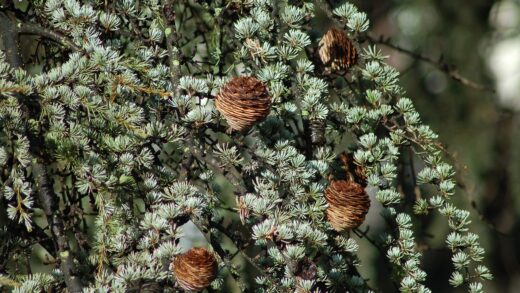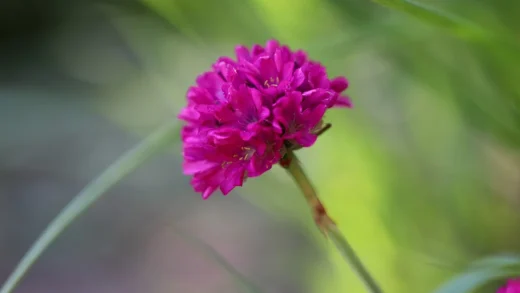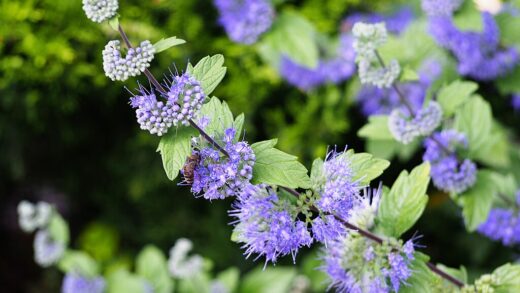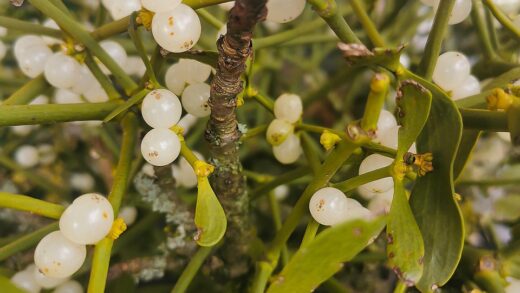Algerian ivy is a remarkably resilient and aesthetically pleasing plant, valued for its vigorous growth and lush, glossy leaves. Its adaptability makes it a popular choice for both ground cover in gardens and as a decorative houseplant, capable of thriving in a variety of conditions. Proper care ensures that this evergreen vine maintains its vibrant appearance and robust health throughout the years. Understanding its fundamental needs regarding light, water, and soil is the first step toward cultivating a stunning specimen that adds a touch of natural elegance to any space it inhabits.
Whether grown indoors or outdoors, Algerian ivy exhibits a versatile nature that appeals to both novice and experienced gardeners. Its rapid growth habit allows it to quickly cover trellises, walls, or bare patches of ground, creating a dense mat of green foliage. While it is low-maintenance, providing consistent care will significantly enhance its growth and prevent common issues. This includes regular watering, occasional feeding, and periodic pruning to maintain its desired shape and size. With the right approach, your Algerian ivy can become a long-lasting and impressive feature of your home or garden.
The plant’s large, lobed leaves are its most prominent feature, often displaying a deep green color, although variegated cultivars with splashes of cream or yellow are also widely available. These varieties may require slightly different care, particularly concerning their light requirements, to maintain their distinctive coloration. Regardless of the specific type, the fundamental principles of care remain the same, focusing on creating a balanced environment that mimics its native habitat. A healthy Algerian ivy is not only beautiful but also contributes to a more pleasant environment by purifying the air.
Success in growing Algerian ivy hinges on a proactive and observant approach to its needs. By regularly checking the soil moisture, monitoring for any signs of pests or disease, and providing adequate light, you can prevent most problems before they escalate. This guide will provide a comprehensive overview of the essential care practices required to help your Algerian ivy flourish. Following these professional recommendations will equip you with the knowledge to ensure your plant remains a vibrant and healthy addition to your collection for years to come.
Understanding the basics of soil and potting
Choosing the right soil is a critical factor for the long-term health of your Algerian ivy, as it directly impacts root development and nutrient absorption. The plant prefers a well-draining potting mix to prevent water from accumulating around its roots, which can lead to a devastating condition known as root rot. A high-quality, all-purpose commercial potting soil is generally sufficient, but you can improve its drainage by adding materials like perlite or coarse sand. This creates a lighter, more aerated medium that allows roots to breathe and grow without restraint.
More articles on this topic
When planting Algerian ivy in containers, selecting the right pot is just as important as the soil. Ensure the container has at least one drainage hole at the bottom to allow excess water to escape freely. Terracotta pots are an excellent choice as their porous nature helps to wick away excess moisture from the soil, further reducing the risk of overwatering. If you opt for a plastic or glazed ceramic pot, be extra mindful of your watering schedule, as these materials retain moisture for longer periods.
The ideal soil pH for Algerian ivy ranges from slightly acidic to neutral, typically between 6.0 and 7.5. Most commercial potting mixes fall within this range, so you usually do not need to make any special adjustments. If you are planting it outdoors in your garden, it might be beneficial to test your soil’s pH level. If the soil is too alkaline, you can amend it with organic matter like compost or peat moss to create a more favorable growing environment for the plant.
Repotting your Algerian ivy should be done every two to three years, or whenever you notice that it has become root-bound in its current container. Signs of a root-bound plant include roots growing out of the drainage holes or a dense, tangled mass of roots visible when you lift the plant from its pot. When repotting, choose a new container that is only one or two inches larger in diameter than the previous one to avoid providing too much excess soil, which can hold excess water and lead to root issues.
Ideal lighting conditions
Algerian ivy is celebrated for its adaptability to a wide spectrum of light conditions, from partial sun to considerable shade. However, to achieve the most vigorous growth and the most vibrant leaf coloration, providing it with bright, indirect light is optimal. An ideal indoor location would be near a window that receives filtered sunlight for several hours a day, such as an east-facing window. This exposure provides sufficient energy for photosynthesis without the harsh intensity that can damage the leaves.
More articles on this topic
While the plant can tolerate lower light levels, its growth may become slower and more stretched, a condition known as etiolation, where stems become long and spindly with sparse leaves. Variegated varieties, in particular, may lose their beautiful patterns and revert to a solid green color if they do not receive enough light. If you notice these changes, moving your plant to a brighter location can help restore its compact growth habit and decorative appearance.
Conversely, exposing Algerian ivy to excessive direct sunlight should be avoided, as it can be detrimental to the plant’s health. The intense rays of the sun, especially during the hot afternoon hours, can scorch the leaves, causing them to turn brown, crispy, and develop unsightly spots. If your only available location receives direct sun, consider using a sheer curtain to diffuse the light or placing the plant a few feet away from the window to protect it from the harshest rays.
For outdoor cultivation, a location that offers partial shade is perfect. Planting Algerian ivy under the canopy of larger trees or on the north or east side of a building will protect it from the intense midday sun while still providing plenty of ambient light. This mimics its natural habitat where it often grows as an understory plant in woodlands. Careful observation of your plant’s leaves will tell you if its light conditions are suitable; healthy leaves should be a rich, consistent color and feel firm to the touch.
Watering and humidity preferences
Proper watering is crucial for maintaining a healthy Algerian ivy, as the plant prefers consistently moist soil but is highly susceptible to problems arising from overwatering. The key is to strike a balance, never allowing the soil to become completely waterlogged or to dry out entirely for extended periods. A reliable method is to check the top inch of the soil with your finger; if it feels dry to the touch, it is time to water the plant thoroughly until you see water emerging from the drainage holes.
During the active growing seasons of spring and summer, your Algerian ivy will likely require more frequent watering, perhaps once or twice a week, depending on factors like temperature, light exposure, and pot size. In the autumn and winter months, the plant’s growth naturally slows down, and its water needs decrease. During this dormant period, you should reduce the frequency of watering, allowing the soil to dry out a bit more between sessions to prevent root rot in the cooler, less evaporative conditions.
Algerian ivy appreciates moderate to high humidity levels, which reflect the conditions of its native environment. While it can tolerate average indoor humidity, it will thrive with an extra boost, especially during the dry winter months when indoor heating systems are in use. You can increase humidity around the plant in several ways, such as misting the leaves with water every few days, placing a humidifier nearby, or grouping it with other plants to create a more humid microclimate.
Another effective technique to raise local humidity is to use a pebble tray. Simply fill a shallow tray with a layer of pebbles and add water until it is just below the top of the pebbles. Place the potted plant on top of the pebbles, ensuring the bottom of the pot is not sitting directly in the water. As the water from the tray evaporates, it will create a pocket of humid air around your Algerian ivy, helping to keep its foliage lush and preventing the leaf edges from turning brown and crispy due to dry air.
Fertilization for optimal growth
To support its vigorous growth, Algerian ivy benefits from regular feeding, particularly during the spring and summer months when it is most actively producing new leaves and stems. A balanced, water-soluble fertilizer formulated for houseplants is an excellent choice for providing the essential nutrients it needs. Look for a fertilizer with a balanced ratio of nitrogen (N), phosphorus (P), and potassium (K), such as a 10-10-10 or 20-20-20 formula. Nitrogen is especially important as it promotes the development of lush, green foliage.
You should fertilize your Algerian ivy once a month throughout the growing season. It is crucial to dilute the fertilizer to half the strength recommended on the product label to avoid over-fertilizing, which can burn the plant’s roots and cause more harm than good. Always apply the fertilizer to moist soil after you have already watered the plant; fertilizing dry soil can lead to rapid nutrient uptake that can shock and damage the root system.
During the autumn and winter, when the plant’s growth naturally slows, you should cease fertilizing altogether. The plant enters a period of dormancy and does not require the extra nutrients to support new growth. Resuming your feeding schedule in the spring as new shoots begin to appear will provide the necessary boost for the upcoming active season. This seasonal approach to fertilization ensures the plant receives nutrients when it can best utilize them.
Observing your plant’s leaves can provide clues about its nutritional needs. If the leaves, especially the older ones, start to turn yellow and the overall growth seems stunted, it may be a sign of a nutrient deficiency. Conversely, if you notice a white, crusty buildup on the soil surface or the leaf tips are turning brown, you may be over-fertilizing. Adjusting your fertilization practices based on these visual cues will help you maintain a healthy and thriving plant.
Pruning and maintenance
Regular pruning is a key aspect of Algerian ivy care, essential for maintaining the plant’s shape, controlling its size, and encouraging fuller, bushier growth. Since it is a fast-growing vine, it can quickly become leggy or overgrown if left untrimmed. Pruning is best done in the early spring, just before the start of the active growing season, which allows the plant to direct its energy into producing new, healthy shoots from the cut points.
When pruning, use a pair of clean, sharp scissors or pruning shears to make precise cuts. You can trim back any long, trailing stems to your desired length, always making the cut just above a leaf node. This will stimulate the plant to branch out from that node, resulting in a denser and more compact appearance. It is also an opportune time to remove any yellow, dead, or damaged leaves and stems to improve the plant’s overall health and aesthetics.
Beyond aesthetic pruning, maintenance also involves keeping the plant clean and free of dust. The large leaves of Algerian ivy can accumulate dust over time, which can block sunlight and hinder the process of photosynthesis. You can gently wipe the leaves with a soft, damp cloth every few weeks to keep them clean and glossy. Alternatively, you can give the plant a gentle shower with lukewarm water, which also helps to wash away any potential pests that may be hiding on the foliage.
Managing the plant’s growth is particularly important when it is grown as a ground cover outdoors, as it can become invasive and spread into unwanted areas. Regular trimming of the edges of the planting area will help keep it contained. For climbing ivies, periodically check the supports and guide the new growth to ensure it is growing in the desired direction. This proactive maintenance will not only keep your plant looking its best but also prevent it from becoming unmanageable.


















